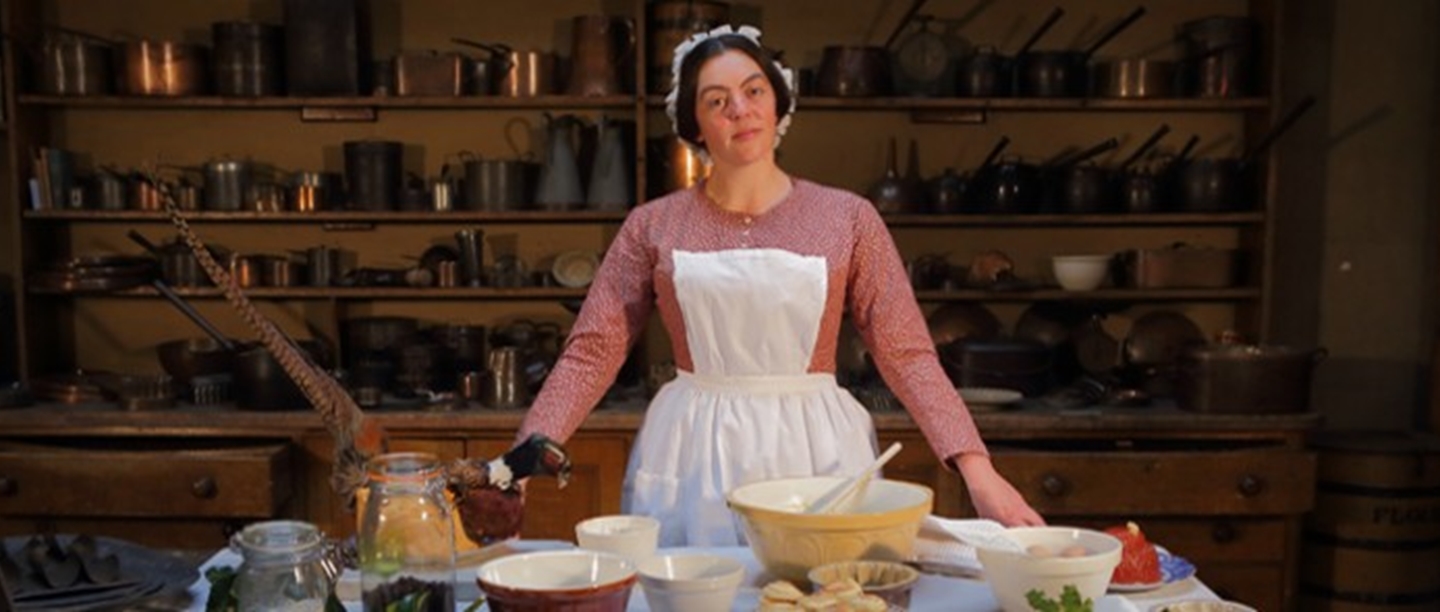
Dusty copies of Mrs Beeton’s ‘Book of Household Management’ lie in kitchens across the county, but with Christmas ahead can it be of any help to modern families planning for the festive season? Historical interpreter Kathy Hipperson investigates.
Mrs Beeton’s ‘Book of Household Management’ was written to give a housewife advice and provide her with the confidence to run her home. It was one of the first its kind - a woman writing for other women and bringing together everything in one edition. It covered a variety of topics, from advice on cookery and employing servants to pig keeping.
Over 150 years later, it’s clear that some of her advice is ‘of its time’. Mrs Beeton is clear from the very beginning where she stands on the issue of women’s roles. They are to be wives and mothers, alleviating vice in their husbands, and bringing up children to be solid middle class citizens. They are not angels, and must get their hands dirty, and make sacrifices both physically and emotionally in order to fulfil their role.
So how can Mrs Beeton help modern families plan for Christmas?
1. Leftovers
Mrs Beeton is incredibly useful for making new meals from leftovers. All levels of Victorian society were keen that nothing should go to waste. So for those sleepy days after the 25th December, with the turkey and extra vegetables lingering in the kitchen, Mrs Beeton is a good friend to have. One of my favourites is Turkey Soup:
Ingredients
- 2 quarts (pints) of medium stock
- Remains of a cold turkey
- 2oz (60g) rice flour or arrowroot
- Salt and pepper to taste
- 1 tablespoon mushroom ketchup
Method
Cut the turkey into small pieces and place it in the stock and then simmer for around 4 hours or until the bones are clear. Take out the bones and sieve. Add the rice flour or arrowroot, salt and pepper to taste and mushroom ketchup, and you have a delicious turkey soup ready to serve 8 people.
“Soup has been and still is, a mode of preparing food much neglected in this country. It forms the first course of all dinners with any pretension to fashion, but it has not yet come to be an everyday diet of the multitude. And yet it may fairly be said that no food is more digestible and wholesome, and that none offers the same opportunities of utilising material that must otherwise be wasted.” - Mrs Beeton
No shortage of soup pans in the Victorian Kitchen at Brodsworth Hall, South Yorkshire
2. Alternative Dishes
If you’ve got the time, I like to think that Mrs Beeton would be a good place to start if you wanted some inspiration or variety for your Christmas dinner. For example, Nesselrode Pudding uses the dried fruit of a traditional Christmas pudding in a sweet chestnut cream, and you can choose to serve this either as an ice-cream or a set cream:
Ingredients
- 24 chestnuts
- ½ pint milk
- 4 egg yolks
- ½ pint cream
- 6 oz caster sugar
- Vanilla essence
- 2 oz glacé cherries
Method
Parboil, shell and skin the chestnuts. Simmer them in ¼ pint milk until tender. Rub through a fine sieve. Heat remaining ¼ pint milk until almost boiling, add the beaten egg yolks and cook, stirring continuously until it thickens without boiling. Add half of the half-whipped cream and vanilla. Freeze until nearly set, then stir in the chopped cherries and the remainder of the cream stiffly-whipped. Freeze until set, stirring frequently. Press into a mould, seal with lard, wrap in paper and bury in ice and salt until required (or put it in the fridge!).
3. Traditional Recipes
Mrs Beeton often borrowed recipes and practical advice from other cooks. In fact, hardly a line of her book is original – she borrowed heavily from William Kitchener, Louis Ude, Antonin Careme, Francatelli, Alexis Soyer and Eliza Acton. This recipe for a good old traditional Christmas Pudding comes from Eliza Acton:
Ingredients
- 3oz flour
- 3oz breadcrumbs
- 6oz each of suet, raisins and currants
- 4oz minced apples
- 5oz sugar
- 2oz candied peel
- ½ tsp spice
- Pinch of salt
- Small wineglass of brandy
- 3 eggs
Method
Mix and beat the ingredients very well together, tie them tightly in a well-floured cloth and boil (or steam) for 3 ½ hours. This pudding can be boiled in a cloth, or put in a pudding basin or food mould.
4. The Christmas Table
Making 'a show' of the Christmas table as we do now stems from Mrs Beeton's era. The later Victorian age was when all the dishes were laid out on the Christmas table at the same time and people were encouraged to help themselves. Prior to that, guests would have been served or had their meals plated for them.
Mrs Beeton gives advice on the decorative nature of the Christmas table that we still embrace today. In Mrs Beeton’s era the sweets and cakes were placed out to be seen with the savouries.
Mrs Beeton’s Victorian Christmas Events
You can see the cooks from Brodsworth Hall in South Yorkshire and Belsay Hall in Northumberland putting Mrs Beeton’s advice into action this Christmas as part of a special programme of events. English Heritage is also running Victorian Christmas events at historic properties across the country.
Find a Victorian Christmas event here